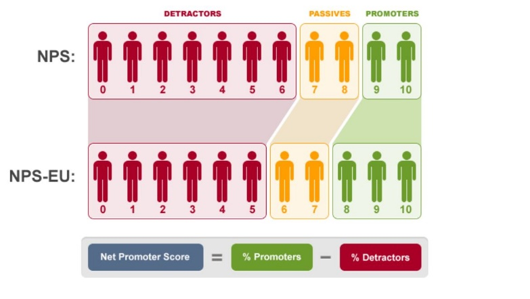How cultural differences can impact NPS results, and what to do about it
If your company operates across different countries and cultures, you know that customers behave differently based on where they’re located, and what languages they speak.
If your organization uses the Net Promoter Score (NPS) metric to gauge customer satisfaction and country-specific performance, you may notice significant regional variances in your data. It turns out that responses to NPS surveys can vary widely from country to country, or region to region, due to cultural differences that affect how the act of “scoring” is perceived1.
Americans tend to give enthusiastic (and higher) scores, while Europeans are more restrained, awarding mid-range scores that actually reflect a high level of satisfaction. The reason? Cultural differences that go back to our early years in school, where American children are rewarded with “As” for hard work, while their European counterparts might receive an 8 out of 10 for a superior performance.
According to a study2 released by Satmetrix, co-developers of the Net Promoter customer loyalty metric, these are just some of the cultural variances that can affect NPS results:
- In Japan, customers tend to rate customer satisfaction loyalty lower compared to other countries.
- In Latin America, customers typically rate higher, compared to other regions.
- In the Middle East, customers rate higher than their counterparts in Europe or Asia.
So given these discrepancies, is it worth pursuing a Net Promoter Score for your organization, and making marketing decisions based on the results?
The short answer is yes. A Net Promoter Score provides you with a trackable measure of how loyal your customers are. It’s important because it measures how your customers feel about your brand, rather than how they view your customer support function, or how a specific product performs.
But when you are dealing with cultural differences across a range of markets, it’s not useful to compare NPS results across countries or regions. Because you have to account for scoring biases and different social mores, you are not comparing apples to apples. You can attempt to adjust for these variations – some marketers have proposed a European version, for example, in which a score of 8 counts as a promoter and 6 as passive3.
 Adjusting for European variances in NPS
Adjusting for European variances in NPS[Graphic from CheckMarket, Alexander Dobronte, “Why there needs to be a European variant of the Net Promoter Score,” Jan. 2012, CheckMarket blog, retrieved from: https://www.checkmarket.com/blog/nps-eu/
But these adjustments can get complicated, especially if you are measuring multiple countries and cultures.
Instead, use your NPS results as a measure to track your progress within a specific country.
How you can use country-specific NPS results4
1. To understand and monitor levels of customer loyalty
Your NPS results tell you how likely it is that your customers will recommend your company. Changes in your results can indicate that your levels of customer satisfaction in a country are rising – or falling. Changes in the breakdown of scores, in terms of how many respondents identify as promoters, passives or detractors, can also flag an important change, whether it marks an improvement, or a drop. Long-term, mutually-beneficial customer relationships are critical in healthcare, and NPS results can help you spot potential problems – and the potential loss of customers – with enough lead time to fix them.
2. To discover ways you can improve
Make sure your NPS survey includes open-ended questions, where customers can add comments – or complaints. In addition to following up with those customers who submit low scores, you can use these comments to improve your products, customer service, and internal processes.
3. To find good sources for your referral marketing programs
An NPS survey is a quick and easy way to identify customers who believe in your company and solutions, and who would make good brand ambassadors. Referral marketing is especially powerful in healthcare, where experts and research play a vital role in product development and patient safety. It’s the same for prospects and customers, who place a high value on the insights and perspectives of their peers, and want to learn about their experiences.
If you’d like to learn more about using Net Promoter Scores to better understand your customers, and how you can use NPS results to boost your marketing programs, we can help. Contact Anne-Mie Vansteelant at Living Stone, at +32 55 591 007 or anne-mie.vansteelant@livingstone.eu.
Resources
1. Nataly Kelly, “Lessons Learned from Measuring International Customer Satisfaction,” Feb. 18, 2019, HubSpot, retrieved from: https://blog.hubspot.com/service/international-nps-research
2. “Satmetrix Reveals Findings on Cultural Differences in Customer Loyalty Surveys and Net Promoter Scores,” Feb. 22, 2007, retrieved from: https://www.businesswire.com/news/home/20070222005121/en/Satmetrix-Reveals-Findings-Cultural-Differences-Customer-Loyalty
3. Alexander Dobronte, “Why there needs to be a European variant of the Net Promoter Score,” Jan. 2012, CheckMarket blog, retrieved from: https://www.checkmarket.com/blog/nps-eu/
4. Sophia Bernazzani, "The Ultimate Guide to Your Net Promoter Score," Sept. 13, 2019, HubSpot, retrieved from: https://blog.hubspot.com/service/what-is-nps


.jpg?width=727&name=Living-Stone-CTA-Blog%20(002).jpg)

